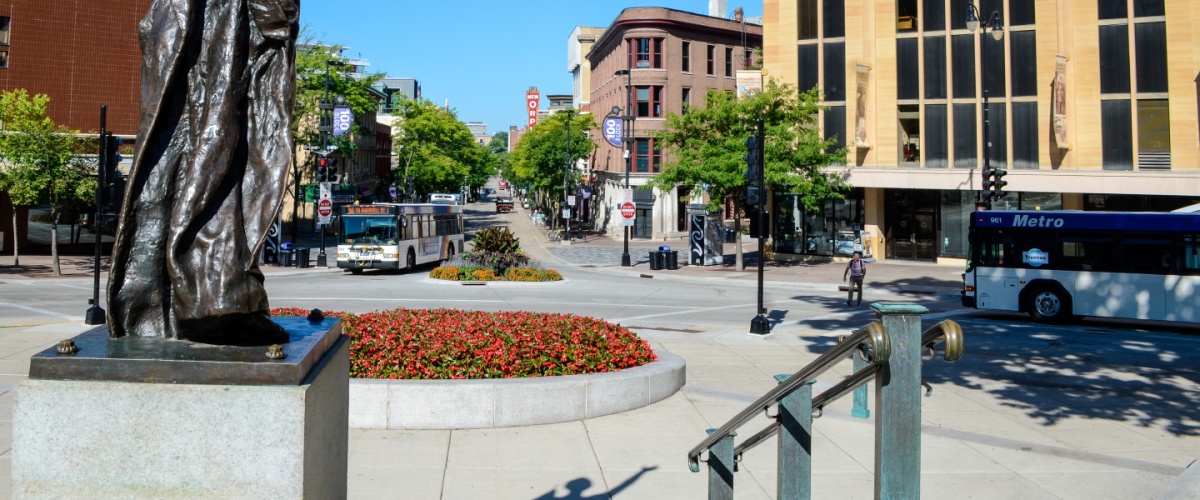
First Steps Taken

Queue Jump Traffic Signals Installed

The City of Madison has taken another important step forward in improving current bus service and implementing a future Bus Rapid Transit system (BRT).
As new service concepts and design efforts continue, BRT-related improvements have now been implemented out on the street.
In November, queue jumps were installed in both directions on E. Washington Ave. at Fourth St. Queue jumps are special traffic signals that allow buses to get a head start into traffic and avoid merging into long lines of vehicles waiting at an intersection. These are the first such traffic signals installed in Wisconsin.
At the Fourth St. intersection, buses pull into a dedicated bus stop on the right side of the street to drop off and pick up passengers. When the light is red, long lines of vehicles queue up next to the bus. During rush hours, the bus often then experiences a delay as it tries to merge back into the regular flow of traffic.
By using this special signal to jump ahead of the traffic queue, drivers are able to avoid falling behind schedule and stand a better chance of getting to transfer points on time. Without the queue jump signal, once the light turns green, the bus must wait for traffic to clear before getting back underway.
Clinton Boone, a 22-year Metro driver, described the installation of these signals as extremely positive and explained that anything that helps get to transfer points on schedule is important.
“If it wasn’t for traffic, we’d stay on time,” Boon said. “We sweat seconds…not minutes. Every little second counts. Especially around rush hour when schedules can get tight.”
Route 6 Driver Adam Corbin called the new queue jump signal fantastic.
“This saves us 20-30 seconds,” he explained. "In the grand scheme of things, that’s an eternity. It can make the difference in getting to a transfer point on time or in an acceptable amount of time for other drivers to be able to wait.”
Corbin further explained that even 15-20 seconds can make a huge difference in keeping his bus on time.
“It can mean getting past an upcoming train or getting through the next light," he said. “Every little thing helps everything else down the line. As a driver, I appreciate these types of things, because it helps get people where they need to go efficiently, safely, and responsibly.”
Installing this queue jump signal is the first of many steps being looked at to speed up Metro’s service in preparation of the implementation of a Bus Rapid Transit system (BRT).
Planning for an initial east-west BRT corridor that operates every 15 minutes through the downtown and university campus areas is now underway.
Bus rapid transit systems use larger buses that carry more passengers and operate more times throughout the day. BRT vehicles operate in separate lanes and use traffic signal priority at intersections to stay on schedule and reduce travel times.
To speed up boardings, transit stations with the ability to pay your fare before getting on the bus will also be installed throughout the corridor.
This east-west corridor is expected to be up and running as early as 2024 with a second north-south corridor put into operation in future years.
As part of the MetroForward initiative, Metro staff are in the process of looking for other locations to install additional queue jumps.

